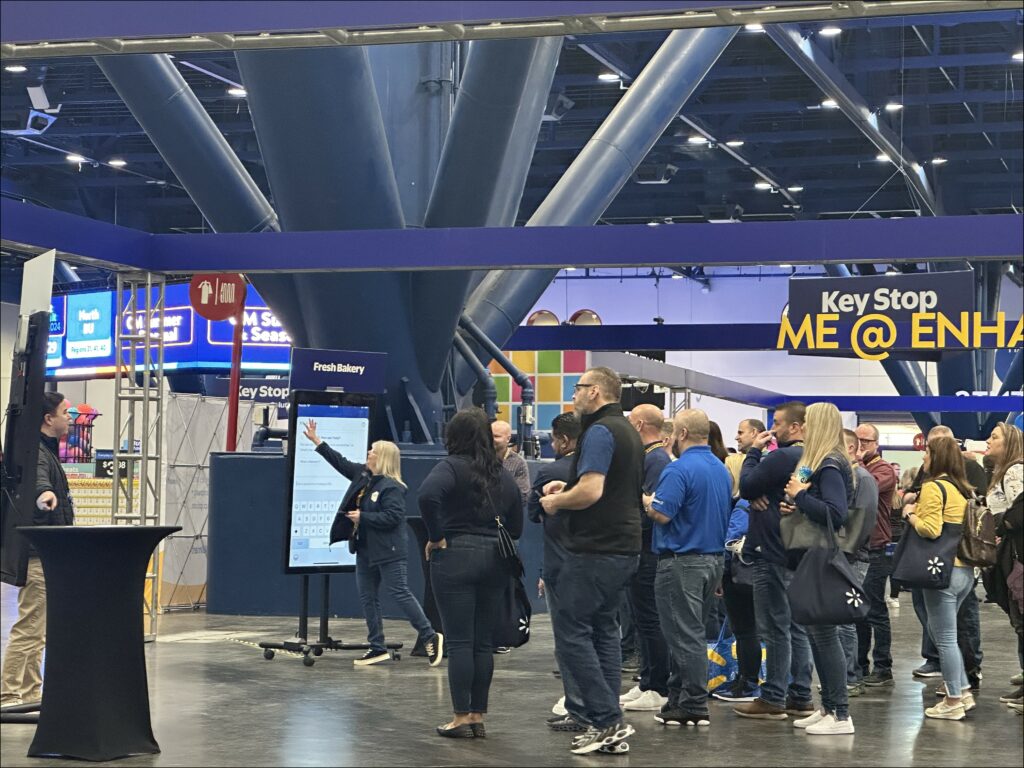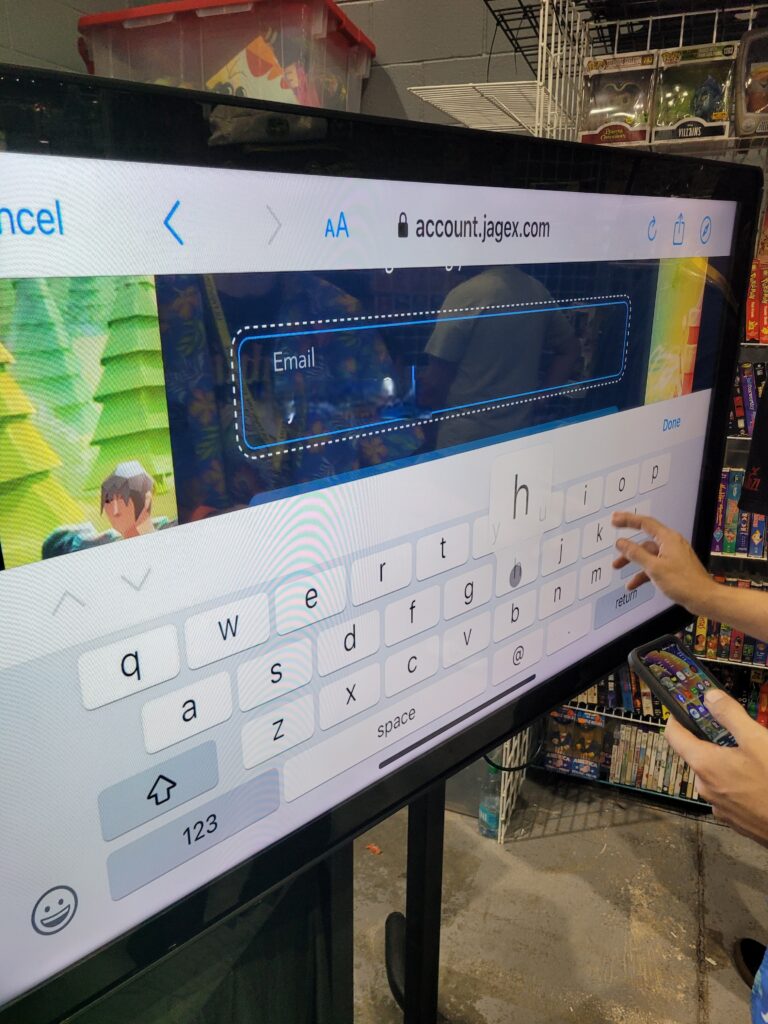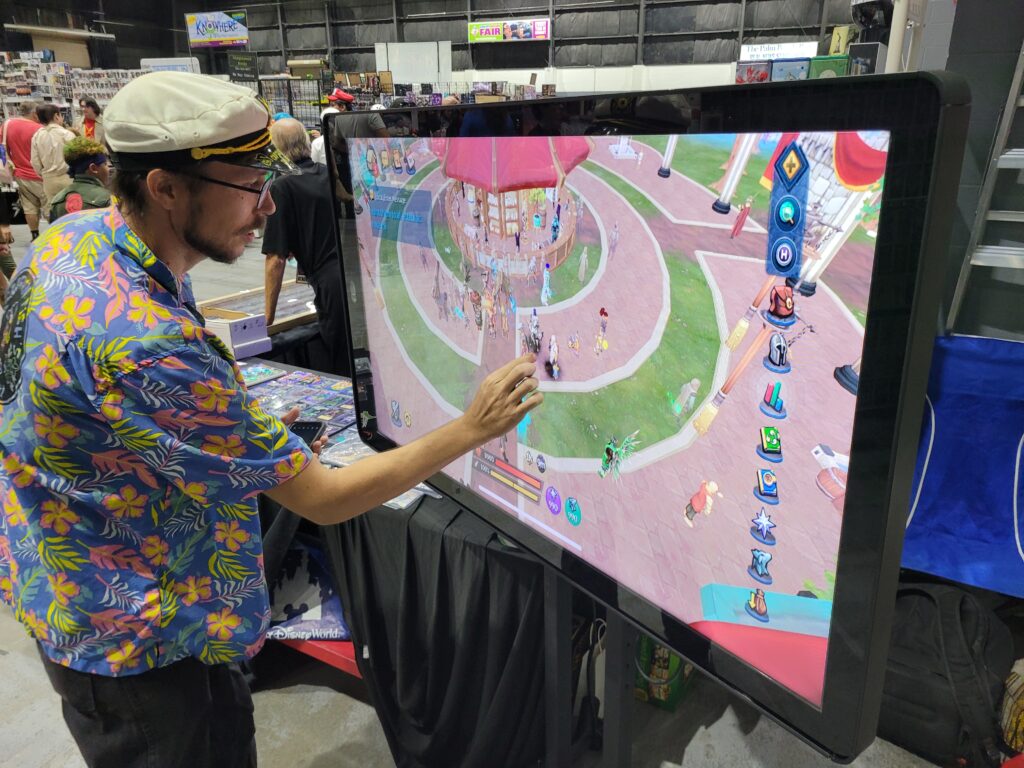The coronavirus pandemic that shook the whole world in 2020 severely impacted in-person event marketing. Thousands of pre-scheduled trade shows globally have been postponed. Resultingly, you may be one of the people wondering whether trade shows are dying out post-COVID.
Or at the very least, you’re not certain if they’re still worth it when virtual meetings and webinars have become the norm, are more convenient, and cost significantly less.
Fast forward to today, the question still lingers: Are trade shows dead? The short answer is no, tradeshows are not dead. They are very much alive. But there’s more to it.
Keep reading to learn whether this B2B marketing staple is still worth pouring resources in for your brand this 2025 and beyond.
Why Trade Shows Are Not Dead, They Just Evolved
The idea of trade shows dates back to the age of merchant capitalism, wherein vendors and producers visited different towns to showcase, market, and sell their products.
Merchants usually time trade fairs to coincide with local festivals, where the general public is in a ‘buying mode.’
When the COVID-19 pandemic hit, a majority of brick-and-mortar business operations had to close down to prioritize public safety, and most trade shows and conventions were canceled and discouraged.
Here’s a brief timeline of trade shows before, during, and after the pandemic crisis.
Pre-Pandemic: The Golden Era
Before the global COVID outbreak in 2020, the trade show industry was poised to grow even stronger. In fact new exhibition venues have been constructed (or existing ones expanded) and set to host major trade shows, particularly in Las Vegas and Orlando.
This should tell you that the industry at large was booming and that participating companies invested heavily in booths, travel, and marketing materials. The ROI was strong and attendees valued meaningful interactions in the flesh.
COVID-19: The Disruptor
Everything stopped when the World Health Organization (WHO) declared the novel coronavirus originating from Wuhan in China a global pandemic. Events both minor and major got canceled, resulting in a huge financial toll (we’re talking billions of dollars in lost revenue).
Businesses and show managers scrambled for alternatives. That’s when virtual trade shows emerged, which lacked the engagement and enthusiasm of in-person events that attendees excitedly sign up for.
Post-Pandemic: A New Era
In May 2023, WHO declared the end of the global coronavirus crisis. In-person trade shows and conferences are back, but they look a bit different. Hybrid models combining live events with online elements have gained traction and are expected to continue rising in the new era of face-to-face marketing.

Are Trade Shows Still Worth It?
We’ve already established that trade shows are not dead. Whether they’re still relevant and worth it is a different story entirely.
Let’s take a closer look at the numbers and industry insights from official reports:
Lead Generation & ROI
Sixty-five percent of businesses consider trade show participation an indispensable marketing tool, with an average ROI of four-to-one ratio (companies earn $4 for every $1 spent). That’s not pocket change.
To put that into perspective, let’s say you invest $25,000 to $50,000 in a modest booth at a mid-size trade show, factoring in space rental, build-out, shipping, travel, and staffing. That investment could potentially generate $100,000 to $200,000 in revenue. Still not worth it?
Taking part in these exhibitions can drive serious leads and partnerships. But not needless to say, this requires company representatives to show up prepared with the right messaging and booth technology.
Industry Differences
Not all sectors benefit equally from exhibiting. Manufacturing, healthcare, and technology are just among the top industries that gain the most value from these events due to their products often requiring hands-on demonstration (which tradeshows are designed for).
In fact, trade shows are the second-biggest source of B2B revenue in the United States, next to direct sales.
On the other side of the coin, companies offering digital services may see better profitability with content marketing or targeted advertisements. Unless they bring something truly immersive to the trade show floor.
The Human Connection
People buy from and connect with people. Exhibitors know this for a fact, with a whopping 95% of them expressing preference for face-to-face events over their virtual counterparts.
A handshake, a real, unfiltered conversation, a live demo—these are what sets tradeshows apart in the age of Zoom and Microsoft Team meetings.
Cost vs. Benefit
Booth space, logistics, travel, hotel accommodation, staffing—exhibiting at trade shows are no joke financially. Still, companies see tremendous value in in-person exhibition marketing because of the networking opportunities and ROI it promises.
The key is to make your booth more interactive with the right technology, e.g., a touchscreen kiosk, so you can attract quality leads that are ready to talk business and get the best value out of every square foot you paid for.
How Technology is Keeping Trade Shows Alive
Year after year, B2B trade shows are seeing steady growth, with 13,000 exhibitions recorded annually in the US and with over 12 million attendees in the first 9 months of 2023 alone.
To keep up with the times, trade show exhibitors are investing in making their booths more attractive + interactive. Here’s how you can do it too:
Augmented Reality (AR) & Virtual Booths
AR brings your products to life. Attendees can explore 3D models, visualize how equipment works in real time, or walk through digital experiences without touching a thing. Virtual booths extend that experience to remote audiences who can’t travel to explore your brand. It turns a 10×10 inline booth into a fully immersive world.
Live Streaming & Hybrid Models
Who said you have to choose between face-to-face and virtual models? Hybrid events allow you to do both. Stream your booth demos, run remote Q&As, or host product launches live from the show floor. This gives your brand a multi-platform presence. Audiences that can’t attend physically still get the experience.
Touchscreen Kiosks & Interactive Displays
These aren’t just shiny tech for the sake of flash. Interactive screens like Padzilla give visitors the power to control their experience. Browse product options, watch demo videos, play with your software, fill out lead forms—it’s all in one place. The data you capture is way more useful than a fishbowl full of business cards.

The Padzilla Advantage: Why a Touchscreen Kiosk Helps Make Your Booth Stand Out
By using a giant touchscreen kiosk from Padzilla, you can demonstrate the value your product or service brings to your high-caliber prospects. Here’s how and why:
More engagement, less paper
Brochures can get tossed minutes after someone leaves your booth to visit another. Not that printed flyers are obsolete, but there’s a more effective way to showcase your product, especially at a trade show.
Case in point: Live demos, where visitors won’t just read but swipe, tap, explore, and experience your brand on their own terms.
Effortless product showcases
Instead of explaining your product a 100x, let a massive interactive display do it on your behalf. Launch software apps, play product videos, display case studies, or walk curious visitors through step-by-step workflows.
All on a massive, eye-catching screen. It’s a show-and-tell experience that scales. It also saves your voice and keeps your booth buzzing.
Lead capture and data collection
No more stacks of business cards or hastily written email addresses on notepads. Lead capture becomes seamless and digital with Padzilla. Attendees can input their info directly into forms on the screen. The data can then be synced straight into your CRM.
Want to set up automated follow-ups? Easy peasy. Need to qualify leads as they come in? Consider it done. It’s faster, cleaner, and way more reliable than old-school methods.
Reduce staff dependence
Think of Padzilla as your digital staff member that never gets tired, distracted, or pulled away in conversation. A digital assistant that’s there to educate attendees and even answer common queries through custom apps or videos.
That frees up your human staff to concentrate on high-value conversations with booth guests who hold strong buying authority. With it, you can clone your best pitch and display it on a giant iPhone-style 43”, 55”, or 65″ screen.
What is the Future of Trade Shows?
Trade shows aren’t dying. In fact, the market is projected to grow by approximately 10.9% between 2019 (pre-pandemic) and 2028.
Also, tradeshow events are becoming smarter and more valuable. What’s next in the exhibition industry, you ask?
- Experience-Driven Exhibits – The future belongs to fully immersive experiences. Think: VR walk-throughs, interactive games, hands-on product trials, and personalized journeys guided by user input. These experiences stick and, more importantly, they convert.
- AI & Personalization – Imagine walking up to a booth where the screen already knows what products might interest you… AI is making this a reality. With behavior tracking, personalized content delivery, and even AI chat assistants handling basic questions, booths are becoming smarter and more efficient.
- Sustainability – Companies are ditching wasteful, one-time-use banners for digital signage, reusable booth components, and digitalized lead capture tools. Not only are these good for the planet, they also cut costs and simplify logistics. Sustainable exhibiting is becoming a key part of brand reputation and future-proofing your trade show attendance.

Trade Shows are Dead? Related FAQs
Are trade shows still popular?
People think that after COVID-19, trade shows are now a thing of the past. But in reality, trade shows remain very popular and even highly preferred over virtual events among exhibitors and attendees alike.
Are trade shows considered marketing?
Yes, trade shows are considered marketing. Companies invest in this in-person event advertising to showcase their new products, potentially attract purchase-mode customers, and rub elbows with industry peers and colleagues for the latest innovations and strategies.
How effective are trade shows?
Because it’s conducted in-person, you can meet and network directly with company representatives possessing decision-making functions. Therefore, chances are high that you will come out of the event with captured leads to write follow-up emails to, though it would largely depend on how you do it in terms of booth design, technology, and overall messaging.
What are the disadvantages of trade shows?
A majority of exhibitors seem to be in consensus on one thing: participating in tradeshows can be pretty darn expensive, typically with tens of thousands of dollars in investment. But when done right, the returns often justify the relatively high expense.
Who usually attends trade shows?
People attend trade shows for various reasons, such as learning the latest innovations from their industry, taking advantage of special offers from exhibitors, and expanding their professional network. As such, trade show attendees encompass members of a certain trade, including business executives, industry leaders, suppliers, distributors, buyers, sales and marketing reps, as well as the members of the press.
How long do trade shows last?
Trade shows can be a lucrative opportunity for exhibitors to showcase their product offerings and engage in professional networking. A major trade show can last anywhere from 1 to 5 days, sometimes even a full week.
For example, the ProMat 2025 event—a massive global gathering in the supply chain sector—was held in Chicago and ran for 4 days, from March 17 to 20.
Wrapping Up: Trade Shows are not Dead
Trade shows are far from dead. In fact, it’s the opposite as more exhibitors plan to participate in future trade shows and still consider live event marketing an integral part of business networking and product exhibiting.
If you’re taking part in an expo soon, the key is to make your booth magnetic. A touchscreen kiosk rental from Padzilla can help trigger curiosity and compel attendees to go take a look at your latest product.
Interested in seeing how Padzilla can transform your trade show presence? Let’s make trade shows work for you and maximize your investment. Speak to one of our experts today!

